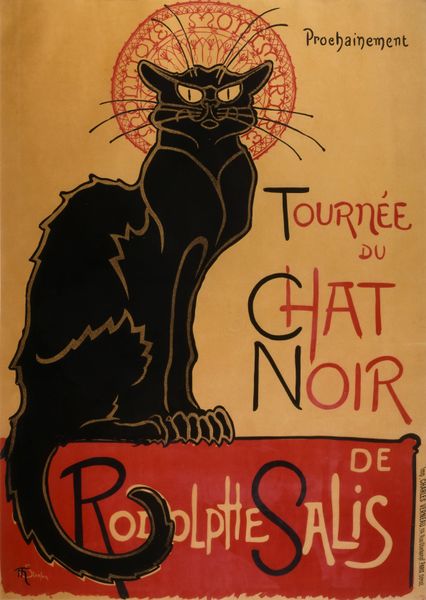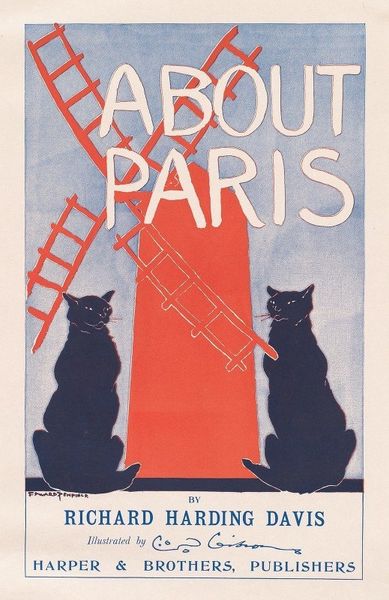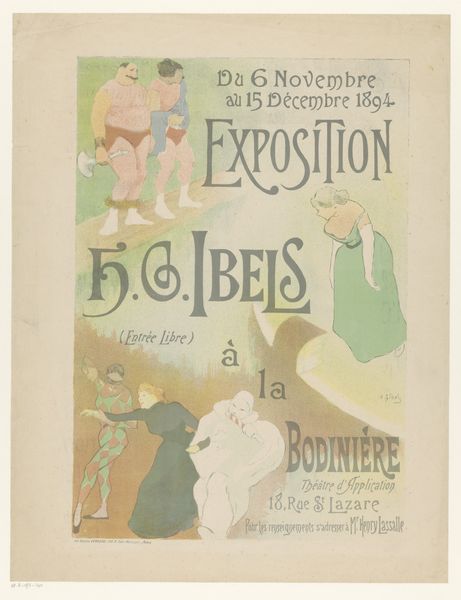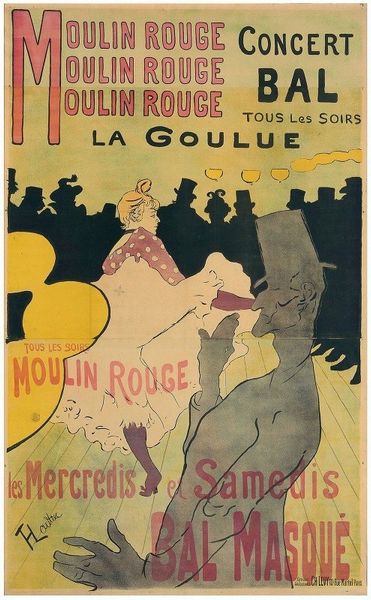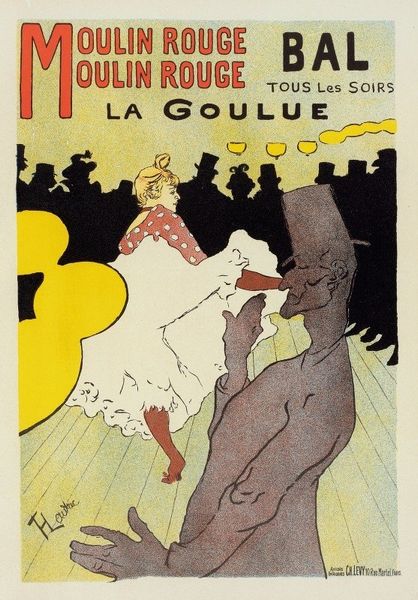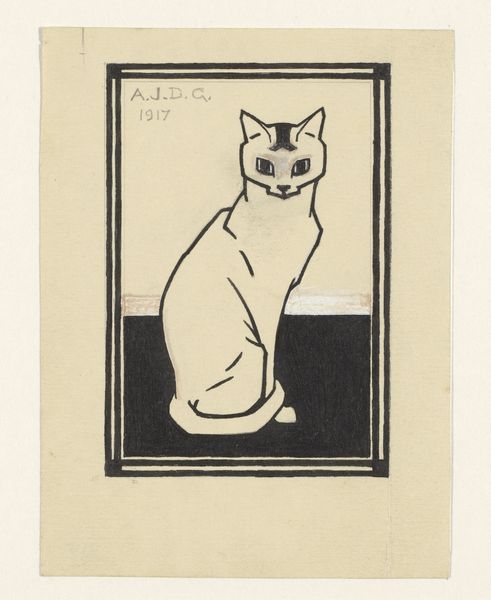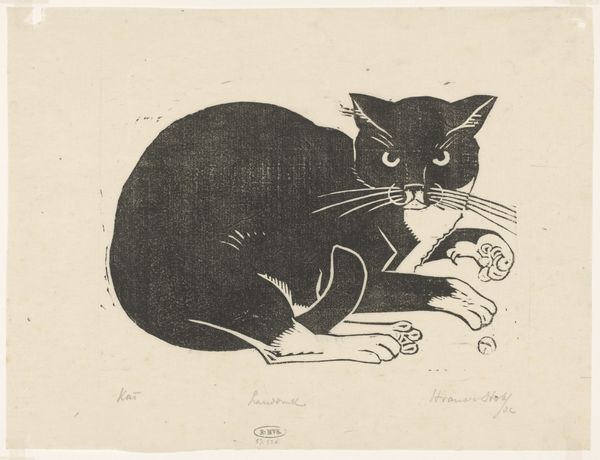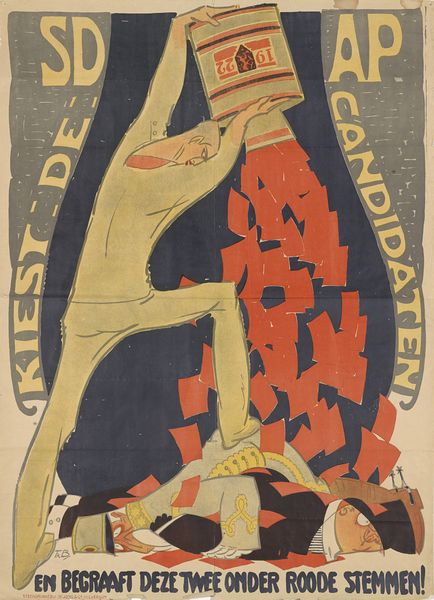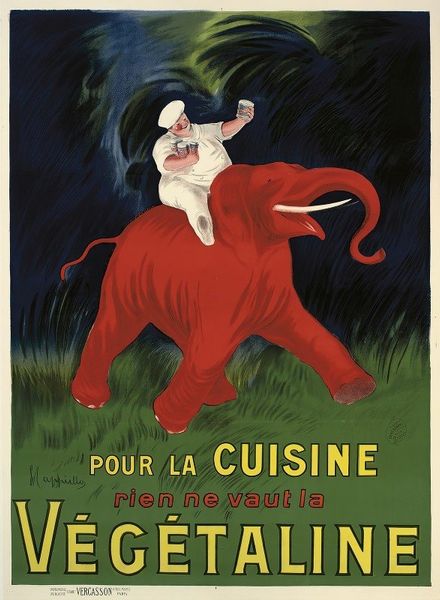
Dimensions: 585 × 794 mm (image; incl. stray marks); 604 × 820 mm (sheet)
Copyright: Public Domain
Curator: Immediately catching my eye is the flat expanse of ochre overlaid by the silhouetted form of a black cat and a mottled orange one in this lithographic poster designed by Théophile Alexandre Steinlen. The work, dating to 1894, is titled "À la Bodinière," and you can find it hanging at the Art Institute of Chicago. It seems perfectly calibrated to its function as advertising for Steinlen’s exhibition. Editor: There's something so stark and immediate about it, even now. The simple color palette, the bold text integrated into the composition, creates a really striking image. Curator: Precisely. It was designed to grab attention, originally displayed publicly, to advertise the upcoming exhibition of Steinlen’s drawings and paintings. You have the details—the location, "18 Rue S. Lazare", the dates from April 10th to May 15th. But notice the almost folksy treatment in the drawing style, giving way to more traditional painting elements. Editor: Yes, and that tension between fine art and popular culture seems deliberate. Steinlen's making prints available at the shop owned by Kleinmann and therefore reaching a different, maybe broader, audience. I wonder about the accessibility of art at that time and how prints contributed to democratization? Curator: Well, certainly posters held a different place, often dismissed by the established art world while simultaneously capturing the energy of Parisian street life. But to come back to production, think about the use of lithography here - a commercial process allowing multiple impressions. This directly reflects shifts in artistic practice driven by industrial printing and evolving markets. Editor: And the prominence of cats. They almost feel allegorical—symbols of independence, mystery, and maybe even the bohemian lifestyle being advertised, implicitly. Curator: Good point. Cats feature quite frequently in Steinlen's work, so these animals could be seen as hallmarks. "À la Bodinière", as a print, participates in a network that allows dissemination across Parisian spaces, not only showing the artist’s engagement, but the politics of imagery in fin-de-siècle Paris as well. Editor: So the next time you're thirsty to engage and feel connected, just as folks did back in 1894 Paris, swing by to see Steinlen’s poster. Curator: Indeed, whether admiring its craftsmanship or unraveling its social implications, it serves a great view to its period.
Comments
No comments
Be the first to comment and join the conversation on the ultimate creative platform.

